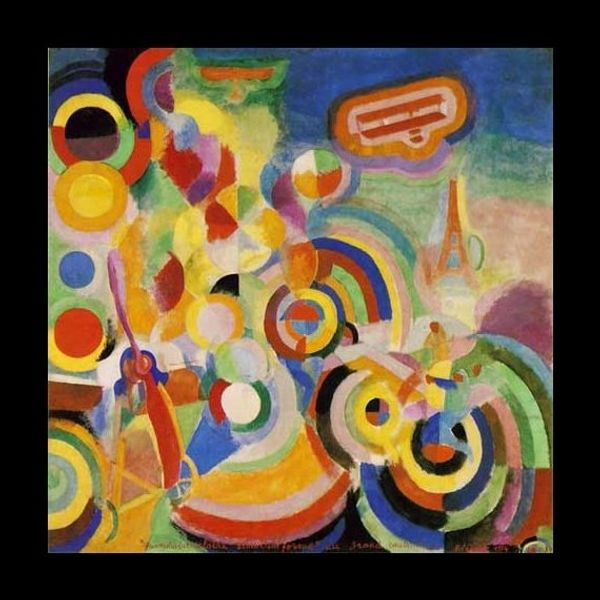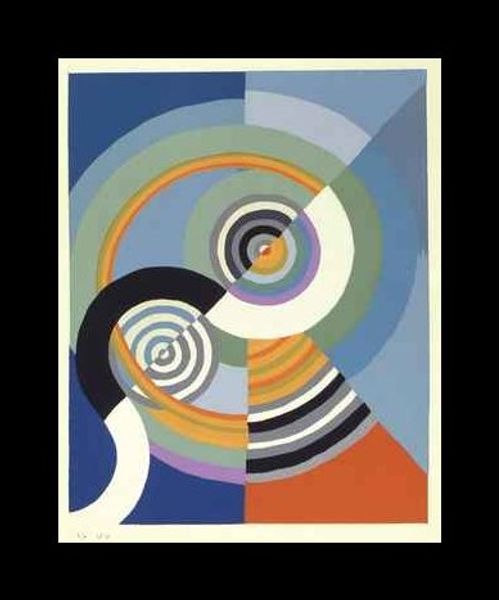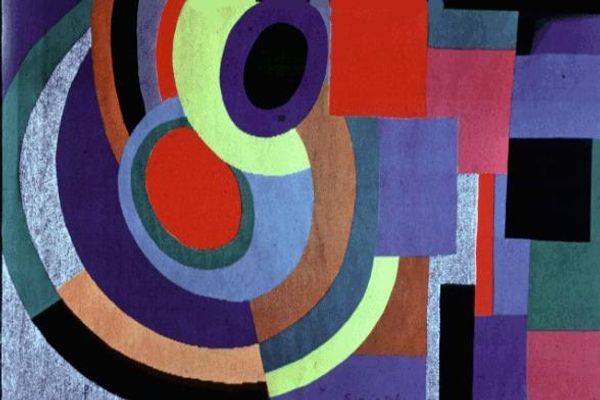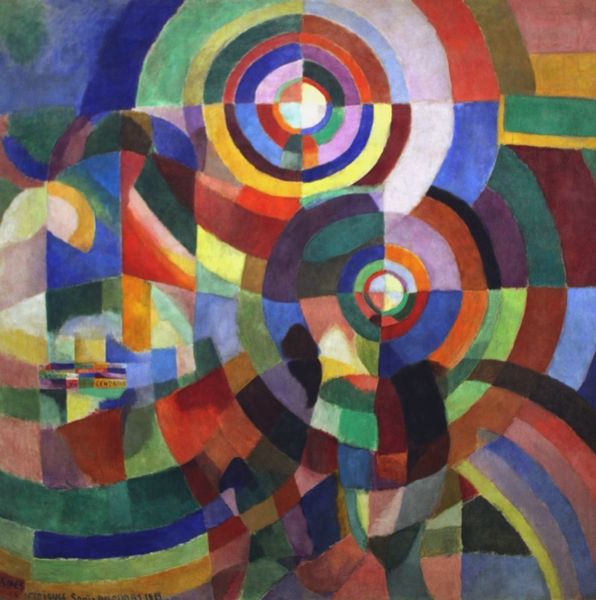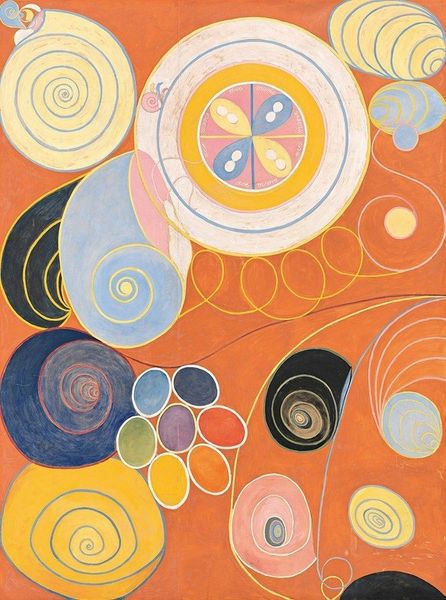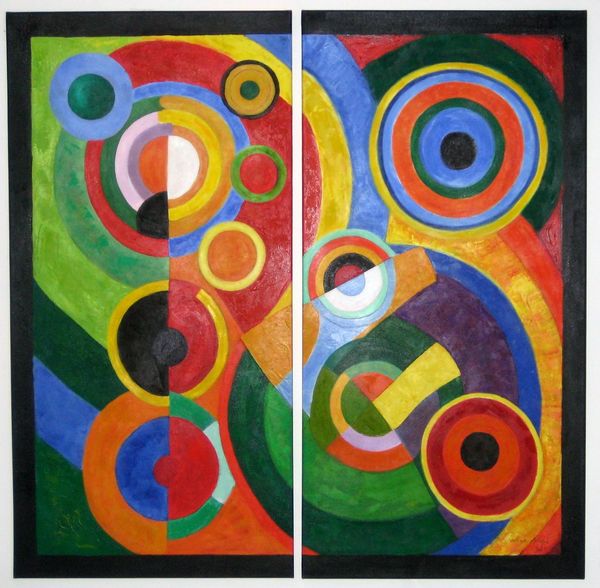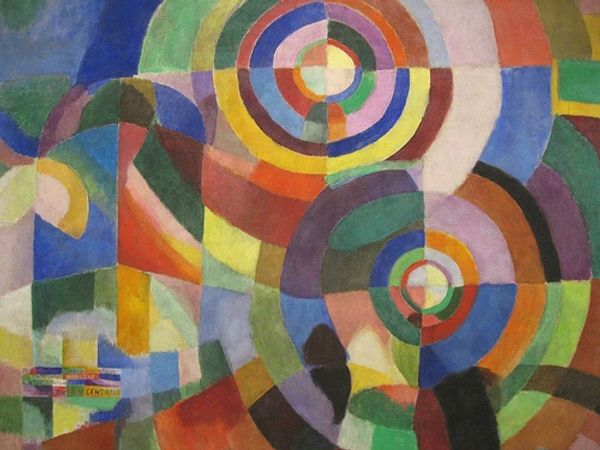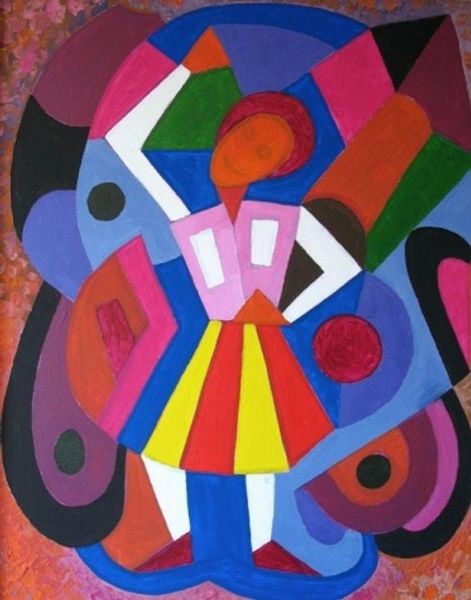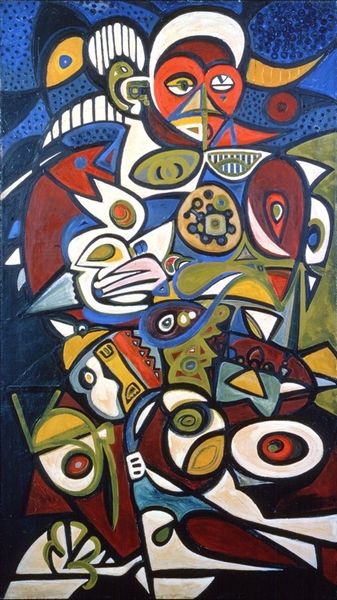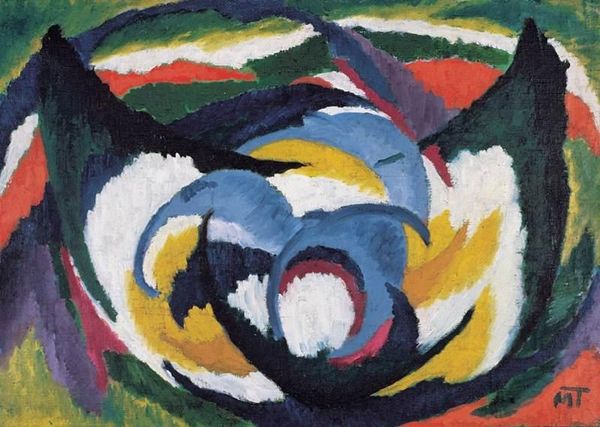
Copyright: Public domain
Editor: Here we have Robert Delaunay’s "The Joy of Life," a painting from 1930 rendered in acrylic paint. At first glance, the painting’s series of overlapping colorful circles are visually exciting, creating a very optimistic mood, like sunshine. What do you see in this piece? Curator: Well, the title is apt. Delaunay explores the “joy of life” through the symbolic language of color. Note how he uses these radiant, concentric circles, each a sun or a target. They become, perhaps, universal symbols of energy, rhythm, and harmony. He taps into primal geometric forms. Editor: Primal? Could you elaborate? Curator: Consider the circle—a form without beginning or end, suggestive of unity and wholeness. Think of ancient sun worship, mandalas, the oculus in ancient temples. Delaunay, consciously or unconsciously, invokes that lineage. It transcends a simple shape, carrying profound cultural weight. Do you feel that effect? Editor: I think I do. Knowing that context deepens the experience of viewing the work, connecting me to… something larger. And I realize now that the disruption of the circles with straight lines is also important. Curator: Exactly! These geometric intrusions jolt the harmony, hinting at the complexities inherent in "joy." There's dynamism and tension present alongside the optimism. They remind me of windows opening in our minds. What an interesting tension… Editor: Yes! This has been such a stimulating perspective. Thank you! Curator: My pleasure! Now I can't unsee those windows you describe. A reminder that even joy requires reflection.
Comments
No comments
Be the first to comment and join the conversation on the ultimate creative platform.
